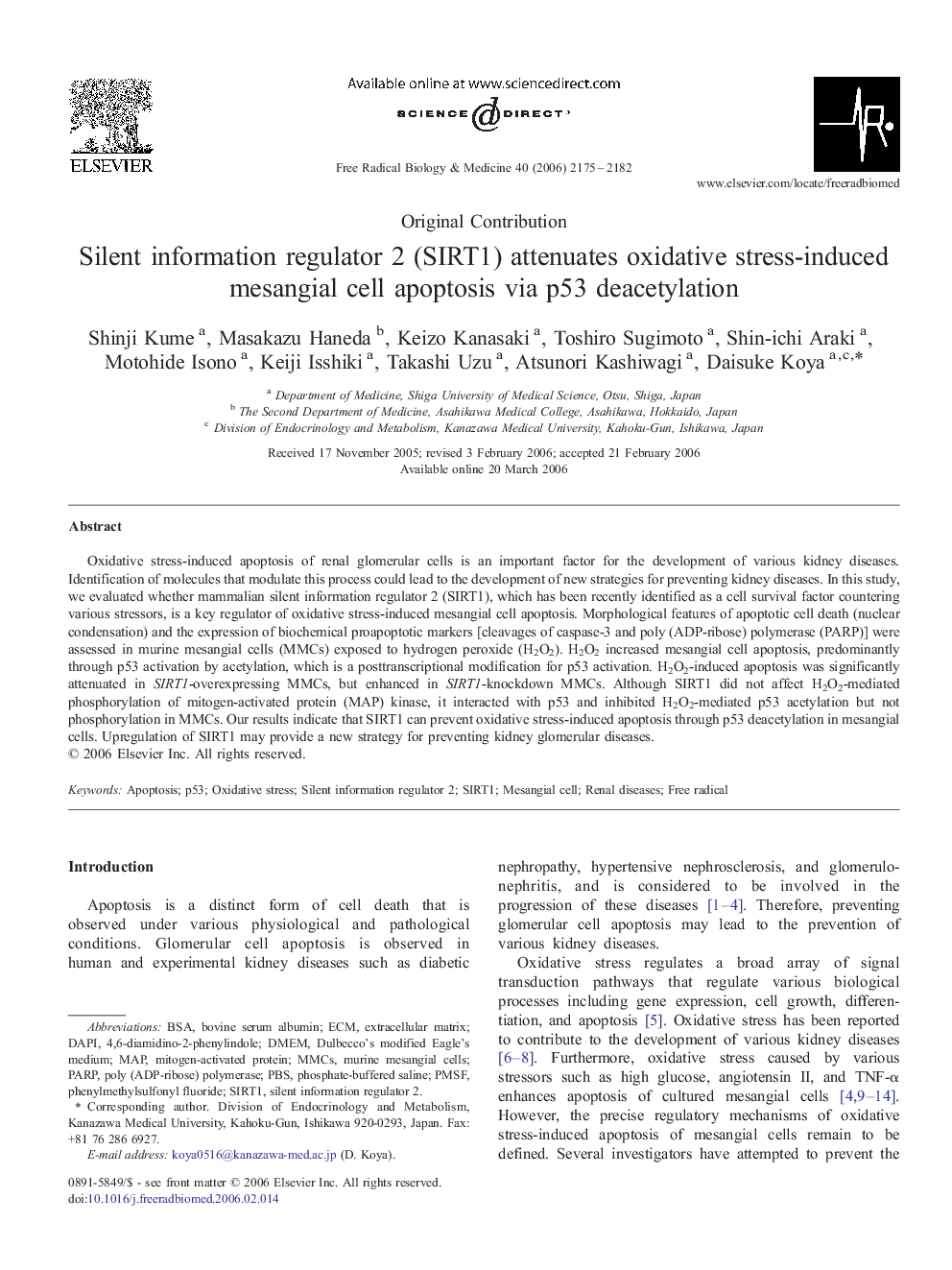| Article ID | Journal | Published Year | Pages | File Type |
|---|---|---|---|---|
| 1912133 | Free Radical Biology and Medicine | 2006 | 8 Pages |
Oxidative stress-induced apoptosis of renal glomerular cells is an important factor for the development of various kidney diseases. Identification of molecules that modulate this process could lead to the development of new strategies for preventing kidney diseases. In this study, we evaluated whether mammalian silent information regulator 2 (SIRT1), which has been recently identified as a cell survival factor countering various stressors, is a key regulator of oxidative stress-induced mesangial cell apoptosis. Morphological features of apoptotic cell death (nuclear condensation) and the expression of biochemical proapoptotic markers [cleavages of caspase-3 and poly (ADP-ribose) polymerase (PARP)] were assessed in murine mesangial cells (MMCs) exposed to hydrogen peroxide (H2O2). H2O2 increased mesangial cell apoptosis, predominantly through p53 activation by acetylation, which is a posttranscriptional modification for p53 activation. H2O2-induced apoptosis was significantly attenuated in SIRT1-overexpressing MMCs, but enhanced in SIRT1-knockdown MMCs. Although SIRT1 did not affect H2O2-mediated phosphorylation of mitogen-activated protein (MAP) kinase, it interacted with p53 and inhibited H2O2-mediated p53 acetylation but not phosphorylation in MMCs. Our results indicate that SIRT1 can prevent oxidative stress-induced apoptosis through p53 deacetylation in mesangial cells. Upregulation of SIRT1 may provide a new strategy for preventing kidney glomerular diseases.
